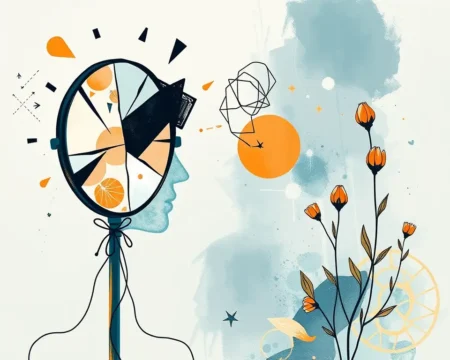It’s no secret that physical activity is vital for overall health. But did you know that certain exercises, when combined with psychological well-being, can significantly extend your lifespan? Research consistently demonstrates a strong link between physical exercise and longevity, highlighting the importance of incorporating specific activities into your routine to enhance both physical and mental health. Let’s explore seven of the best exercises that can help you live a longer, healthier, and more fulfilling life, backed by psychological insights and scientific evidence.
1. The Power of Walking: A Simple Step to a Longer Life
Walking is often underestimated as a form of exercise, yet it’s one of the most fundamental and effective ways to boost your health and longevity. Regular walking offers numerous benefits, including reducing the risk of heart disease, improving mental health, and potentially extending life expectancy.
Psychological Benefits:
- Mindfulness and Reflection: Walking provides an opportunity to think, reflect, and explore new ideas. The rhythmic nature of walking can be meditative, promoting a sense of calm and mental clarity.
- Accessibility and Ease: Walking is an accessible exercise that can be easily incorporated into your daily routine. It doesn’t require special equipment or a gym membership, making it a sustainable habit for long-term health.
- Stress Reduction: A simple walk can ease your mind and diminish stress, contributing to improved sleep and overall mental well-being.
Physical Benefits:
- Cardiovascular Health: Regular walking strengthens your heart and improves circulation, reducing the risk of heart disease.
- Weight Management: Walking helps burn calories and maintain a healthy weight, further reducing the risk of chronic diseases.
- Improved Mood: Walking elevates your mood by releasing endorphins, natural mood boosters that can alleviate symptoms of depression and anxiety.
2. Yoga: Mind-Body Harmony for Extended Life
Yoga is more than just a physical workout; it’s a holistic practice that integrates the mind and body. By combining physical postures, breathing exercises, and relaxation techniques, yoga promotes mindfulness, reduces stress, and enhances overall well-being.
Psychological Benefits:
- Mindfulness and Present Living: Yoga teaches the importance of being present in the moment, fostering a deeper connection with your body and mind.
- Stress Reduction: Yoga helps lower cortisol levels, reducing stress and promoting mental resilience.
- Improved Mental Health: Regular yoga practice can alleviate symptoms of anxiety, depression, and insomnia.
Physical Benefits:
- Flexibility and Strength: Yoga improves flexibility, balance, and strength, enhancing physical fitness and reducing the risk of falls.
- Cardiovascular Health: Certain styles of yoga can elevate your heart rate, providing cardiovascular benefits.
- Overall Well-being: Yoga promotes a sense of well-being by improving sleep quality, boosting energy levels, and enhancing overall physical health.
3. High-Intensity Interval Training (HIIT): Short Bursts for Long-Term Gains
High-Intensity Interval Training (HIIT) involves short bursts of intense exercise followed by brief recovery periods. This type of training is not only time-efficient but also highly effective for improving cardiovascular health, boosting metabolism, and enhancing longevity.
Psychological Benefits:
- Sense of Accomplishment: Completing a HIIT workout provides a sense of accomplishment, boosting self-esteem and confidence.
- Mental Toughness: HIIT requires mental focus and determination, building mental toughness and resilience.
- Mood Enhancement: Intense exercise releases endorphins, leading to improved mood and reduced stress.
Physical Benefits:
- Cardiovascular Health: HIIT significantly improves cardiovascular fitness, reducing the risk of heart disease and stroke.
- Metabolic Boost: HIIT boosts metabolism, helping you burn more calories and maintain a healthy weight.
- Time Efficiency: HIIT workouts are short and effective, making them ideal for busy individuals.
Examples of HIIT exercises:
- Sprinting
- Cycling
- Jumping jacks
- Burpees
4. Dancing: Groove Your Way to a Longer Life
Dancing is not just a fun activity; it’s a fantastic way to stay fit and increase your lifespan. Dancing boosts memory, prevents dementia, reduces stress, increases serotonin levels, and improves cardiovascular health.
Psychological Benefits:
- Memory Enhancement: Learning dance moves can increase your brain’s processing speed and memory, helping to prevent cognitive decline.
- Social Interaction: Dancing is a social activity that encourages interaction, teamwork, and communication, reducing feelings of loneliness and isolation.
- Mood Boost: Dancing helps reduce stress and increase serotonin levels, the “happiness hormone,” promoting overall well-being.
Physical Benefits:
- Cardiovascular Health: Dancing improves cardiovascular health, strengthening your heart and lungs.
- Coordination and Balance: Dancing enhances coordination, balance, and motor skills, reducing the risk of falls.
- Full-Body Workout: Dancing works out all major muscle groups, improving strength and endurance.
5. Swimming: A Calming Full-Body Workout
Swimming is a refreshing and excellent full-body workout that works out all the major muscle groups, strengthens your heart and lungs, and improves your flexibility and endurance. It’s also a low-impact exercise, making it suitable for people of all ages and abilities.
Psychological Benefits:
- Calming Effect: The sound of water and the rhythmic pattern of strokes can be incredibly soothing, reducing stress and promoting mental well-being.
- Mindfulness: Focusing on your breath and movements in the water can promote mindfulness and relaxation.
- Improved Mood: Swimming releases endorphins, boosting your mood and reducing symptoms of anxiety and depression.
Physical Benefits:
- Full-Body Workout: Swimming works out all major muscle groups, improving strength, endurance, and flexibility.
- Cardiovascular Health: Swimming strengthens your heart and lungs, improving cardiovascular health.
- Low-Impact Exercise: Swimming is gentle on your joints, making it ideal for people with arthritis or other joint issues.
6. Strength Training: Building a Strong Foundation for Longevity
Strength training, also known as resistance training, involves using weights or resistance to build muscle strength and endurance. This type of exercise is essential for maintaining physical function, preventing age-related muscle loss, and improving overall health.
Psychological Benefits:
- Improved Self-Esteem: Seeing progress in your strength and fitness levels can boost your self-esteem and confidence.
- Stress Reduction: Strength training can help reduce stress and improve mood by releasing endorphins.
- Sense of Empowerment: Building strength can give you a sense of empowerment and control over your body.
Physical Benefits:
- Muscle Strength and Endurance: Strength training builds muscle mass and improves endurance, enhancing physical function.
- Bone Density: Strength training increases bone density, reducing the risk of osteoporosis and fractures.
- Metabolic Health: Strength training boosts metabolism, helping you burn more calories and maintain a healthy weight.
Examples of Strength Training exercises:
- Squats
- Deadlifts
- Bench presses
- Shoulder presses
- Dips
7. Tai Chi: Gentle Movements for Cognitive and Physical Health
Tai Chi is a form of exercise that involves gentle body movements, rhythmic breathing, and meditation. This practice enhances connectivity between different regions of the brain, improves cognition, and decreases the rate of memory loss.
Psychological Benefits:
- Stress Reduction: Tai Chi helps reduce stress and promote relaxation through its gentle, flowing movements.
- Improved Cognition: Tai Chi enhances cognitive function, including reasoning, planning, problem-solving, and memory.
- Mindfulness: Tai Chi promotes mindfulness and present moment awareness, fostering a sense of calm and mental clarity.
Physical Benefits:
- Balance and Coordination: Tai Chi improves balance, coordination, and motor skills, reducing the risk of falls.
- Flexibility and Strength: Tai Chi enhances flexibility and strength, improving overall physical fitness.
- Cardiovascular Health: Regular Tai Chi practice can improve cardiovascular health, strengthening the heart and lungs.
Integrating Exercise Into Your Lifestyle
Incorporating these exercises into your lifestyle doesn’t have to be daunting. The key is to start slowly, find activities you enjoy, and make them a regular part of your routine. Remember, any amount of physical activity is better than none, and even small changes can have a significant impact on your health and longevity.
Tips for Incorporating Exercise:
- Start Small: Begin with short, manageable workouts and gradually increase the duration and intensity.
- Find Activities You Enjoy: Choose exercises that you find enjoyable and that fit your lifestyle.
- Set Realistic Goals: Set achievable goals to stay motivated and track your progress.
- Make it a Habit: Schedule workouts into your calendar and treat them like important appointments.
- Stay Consistent: Consistency is key to reaping the long-term benefits of exercise.
The Psychological Edge
The psychological benefits of exercise are just as important as the physical ones. Exercise reduces stress, improves mood, boosts self-esteem, and enhances cognitive function. These psychological benefits not only improve your quality of life but also contribute to a longer, healthier lifespan.
Key Psychological Benefits:
- Stress Reduction: Exercise helps lower cortisol levels, reducing stress and promoting relaxation.
- Improved Mood: Exercise releases endorphins, natural mood boosters that can alleviate symptoms of depression and anxiety.
- Enhanced Cognitive Function: Exercise improves memory, concentration, and cognitive performance, protecting against age-related decline.
- Increased Self-Esteem: Achieving fitness goals and seeing improvements in your physical health can boost your self-esteem and confidence.
Final Thoughts: Exercise as a Lifestyle
Exercise isn’t just a routine; it’s a lifestyle choice that leads to better health, longer life, and overall well-being. By incorporating these seven exercises into your routine and prioritizing your psychological health, you can unlock longevity and live a more fulfilling life. Remember, it’s not just about adding years to your life, but adding life to your years. Embrace these exercises, make them a part of your daily routine, and experience the transformative power they bring to your mind and body.










